I'm not too concerned about time efficiency (the operation will be rare), but rather about memory efficiency: Can I grow the array without temporarily having all the values twice?
Is there a more efficient way to grow a large array than creating a new one and copying over all the values? Like, concatenating it with a new one?
What about having fixed-size arrays stored in another array and reallocate / copy that top-level one? Would that leave the actual values in place?
I'm aware of ArrayList, but I need a lot of control about accessing the array and the access needs to be very fast. For instance, I think I prefer a[i] to al.get(i).
The main reason why I care about this is that the array in question (or a number of such arrays) might very well occupy a large enough portion of main memory that the usual strategy of creating a double sized copy before discarding the original might not work out. This may mean that I need to reconsider the overall strategy (or up my hardware recommendations).
